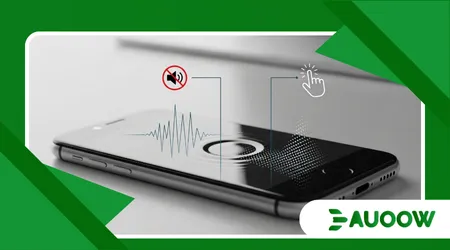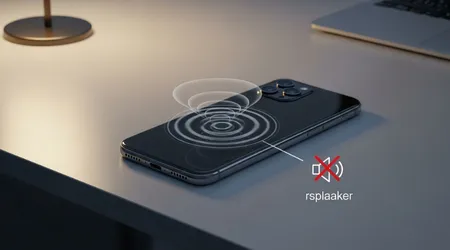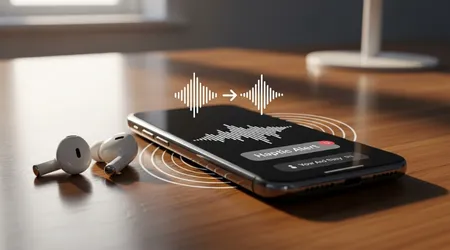Why Haptic Alerts Are Replacing Audio Cues in Modern Design

Haptic alerts are replacing audio cues in modern design, marking a profound and necessary evolution in the field of human-computer interaction.
This shift is not merely a technological novelty; it represents a commitment to enhanced accessibility, reduced cognitive load, and superior user engagement.
Forward-thinking designers are prioritizing the sense of touch as a primary communication channel for immediate, non-intrusive feedback.
The traditional reliance on auditory cues has reached its functional limit in our increasingly noisy and interconnected world.
Sophisticated, nuanced haptic feedback varying in intensity, duration, and rhythm offers a communication fidelity that simple beeps and tones simply cannot match.
This move towards tactile technology places user experience and personalized interaction at the center of innovation in assistive technology.
Why Are Haptic Alerts Superior for Focus and Cognitive Load?
The Challenge of Auditory Clutter
Our daily lives are saturated with competing sounds, making audio cues ineffective and often irritating.
A typical office, street, or train station environment is simply too cluttered for critical beeps to reliably cut through the noise.
This constant auditory bombardment leads to alert fatigue, causing users to filter out essential information.
Crucially, haptic feedback communicates information directly to the user’s body, bypassing the overwhelmed auditory channel entirely.
Research from the Yale-NUS College found that the distraction caused by haptic feedback lasts only about one second, significantly less than the distraction associated with auditory or visual alerts.
This allows users to regain focus much faster.
++ IoT-Based Remote Monitoring: Keeping Vulnerable Users Safe at Home
Enhancing Situational Awareness
Haptic alerts are uniquely capable of enhancing situational awareness, especially in dynamic environments where visual and auditory channels are preoccupied.
Consider a cyclist navigating a busy city street, fully focused on traffic and ambient noise. A subtle vibration pattern from a handlebar-mounted navigation device can guide them without demanding eye contact or ear attention.
This silent, physical communication is particularly vital in high-stakes settings like medical or industrial environments.
Surgeons or machinery operators can receive critical status updates via a specialized wristband, keeping their eyes and ears fully engaged on the task at hand.
This reduction in sensory switching error is invaluable for both safety and efficiency.

How Do Haptic Alerts Drive Accessibility and Inclusivity?
Bridging the Accessibility Gap
One of the most compelling arguments for why haptic alerts are replacing audio cues in modern design lies in the area of accessibility.
For individuals with hearing impairments, traditional audio alerts are, by definition, inaccessible, creating an immediate barrier to essential device functionality. Haptic feedback provides an inclusive, non-auditory channel for information.
A growing number of assistive technologies, such as the SoundSense Band, utilize haptics to translate ambient sounds into distinct, recognizable vibration patterns.
This allows users to “feel” a fire alarm, a ringing doorbell, or even speech rhythms, dramatically improving their independence and contextual awareness.
This application moves haptics into the realm of truly life-changing technology.
Also read: Voice-Controlled Medication Dispensers: A Growing Trend in Elderly Care
The Power of Personalized Feedback
Haptic technology offers an unparalleled level of personalization that audio cues simply cannot match.
A user can customize vibration intensity, duration, and pattern to convey urgency, importance, or notification category, creating a truly personal communication language.
This customization is a massive improvement over generic, one-size-fits-all beeps.
This personalization extends to individuals with sensory sensitivities, such as those with certain forms of autism.
They can tailor the tactile feedback to be perceptible yet non-overwhelming, ensuring they receive critical information without triggering sensory overload.
The flexibility of haptics makes it an inherently more human-centric design choice.
Read more: The Ethics of AI in Assistive Technology: Inclusion at the Design Stage
What Financial and Experience Benefits Do Haptics Offer to Businesses?

Cost-Effectiveness and Reliability
From a manufacturing and cost-effectiveness perspective, integrating high-quality haptic feedback mechanisms is becoming increasingly efficient and affordable.
Basic tactile feedback devices are often cheaper to produce and install than complex, high-fidelity audio systems. This cost reduction, coupled with superior user satisfaction, benefits manufacturers directly.
Furthermore, haptic components often prove more reliable and less susceptible to environmental interference than speakers or microphones.
They function perfectly in noisy, wet, or extremely quiet conditions where audio systems would fail, making them ideal for ruggedized products and mission-critical applications.
This reliability translates into fewer support issues and greater product trust.
Increasing User Immersion and Retention
Haptic feedback dramatically enhances the sense of immersion and realism in virtual and augmented reality (VR/AR) and gaming.
When users can “feel” the recoil of a weapon or the texture of a virtual button, the experience becomes more tangible and memorable.
Research shows that haptics can increase user presence in virtual environments, sometimes even more effectively than vision alone.
A study in the Journal of Consumer Research suggests that mobile vibrations evoke a unique reward response in consumers.
This tactile reward response is distinct from auditory or visual feedback and can even influence consumer choice, potentially boosting purchasing in online shopping environments.
This confirms that haptics is a powerful, subtle driver of engagement and behavioral compliance.
How Does Modern Haptic Technology Differ from Simple Vibrations?
Moving Beyond Simple Buzzing
The initial perception of haptics a simple, crude phone buzz is drastically outdated. Modern haptic systems utilize sophisticated linear resonant actuators (LRAs) and advanced algorithms to create complex, detailed tactile sensations.
These are not merely on/off vibrations but nuanced patterns, mimicking textures, fluid movement, and even directional cues.
Imagine the difference between a generic notification buzz and a personalized, “liquid” feel that simulates a subtle tap on the wrist for a new text message, versus a rapid, aggressive pulse for an emergency alert.
This fidelity allows designers to communicate abstract concepts (like progress or success) with simple, recognizable physical feelings.
The Rise of Multisensory Haptics
The frontier of haptic innovation lies in multisensory feedback. Researchers are now developing systems that integrate various forms of touch-based feedback simultaneously, including vibration, skin stretch, pressure, and even temperature.
This complexity allows for an unprecedented level of real-world simulation and communication.
For example, in medical rehabilitation, prosthetic limbs are being equipped with haptic feedback to simulate the sensation of grip force or texture.
This allows the user to gain a more intuitive, closed-loop control over the device. The seamless integration of touch with visual and auditory information is the definition of next-generation, truly assistive technology.
| Alert Modality Comparison (2025 Trends) | Haptic Feedback | Audio Cues |
| Cognitive Load Impact | Low (Quick recovery, non-visual) | Moderate to High (Requires auditory focus) |
| Noise Immunity | Excellent (Functions in silent or noisy environments) | Poor (Easily masked by ambient noise) |
| Accessibility (Hearing Impairment) | High (Provides essential, non-auditory access) | Low (Inaccessible) |
| Personalization Potential | Very High (Customizable patterns, intensity, duration) | Low (Limited by volume and tone) |
| Privacy of Alert | 100% Private | Zero Privacy (Alerts everyone nearby) |
Source: Compiled from various user experience studies and assistive technology reports for 2025.
The data is irrefutable: haptic alerts are replacing audio cues in modern design because they offer a superior, more inclusive, and fundamentally more human experience.
This strategic shift to the tactile dimension improves safety, enhances accessibility for the hearing-impaired, and reduces the cognitive burden on all users.
It is an investment in user experience that pays dividends in engagement and efficiency. The age of the annoying beep is drawing to a close, replaced by the silent, eloquent language of touch.
If you are developing any new digital or physical product, can you afford not to prioritize this potent, personalized communication channel? Share your favorite haptic experience in the comments below!
Frequently Asked Questions
Is haptic feedback the same as simple vibration?
No. Simple vibration is an on/off buzz. Modern haptic feedback uses precise actuators and software to create nuanced effects, mimicking sensations like texture, force, and directional cues.
What is the primary benefit of haptics in a noisy environment?
Haptics provides 100% private and reliable alerts that do not rely on the user’s auditory channel. This ensures critical information is received even amid loud ambient noise or while the user is wearing headphones.
How do haptics help people with hearing loss?
Haptic devices convert auditory information (like alarms, doorbells, or voice pitch) into distinct, interpretable vibration patterns. This allows individuals who are deaf or hard-of-hearing to “feel” important environmental cues.
Does haptic feedback increase battery drain on devices?
While haptic actuators require energy, modern LRAs and advanced power management techniques have significantly reduced the impact. The increased user engagement and efficiency often outweigh the minimal battery cost.
